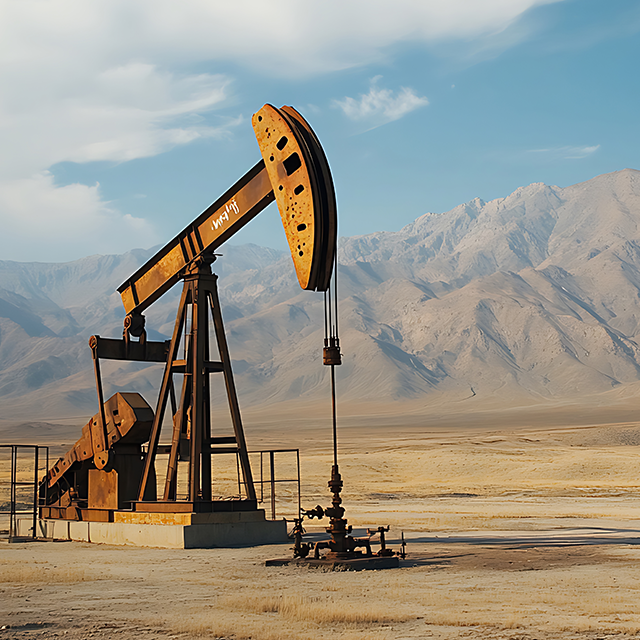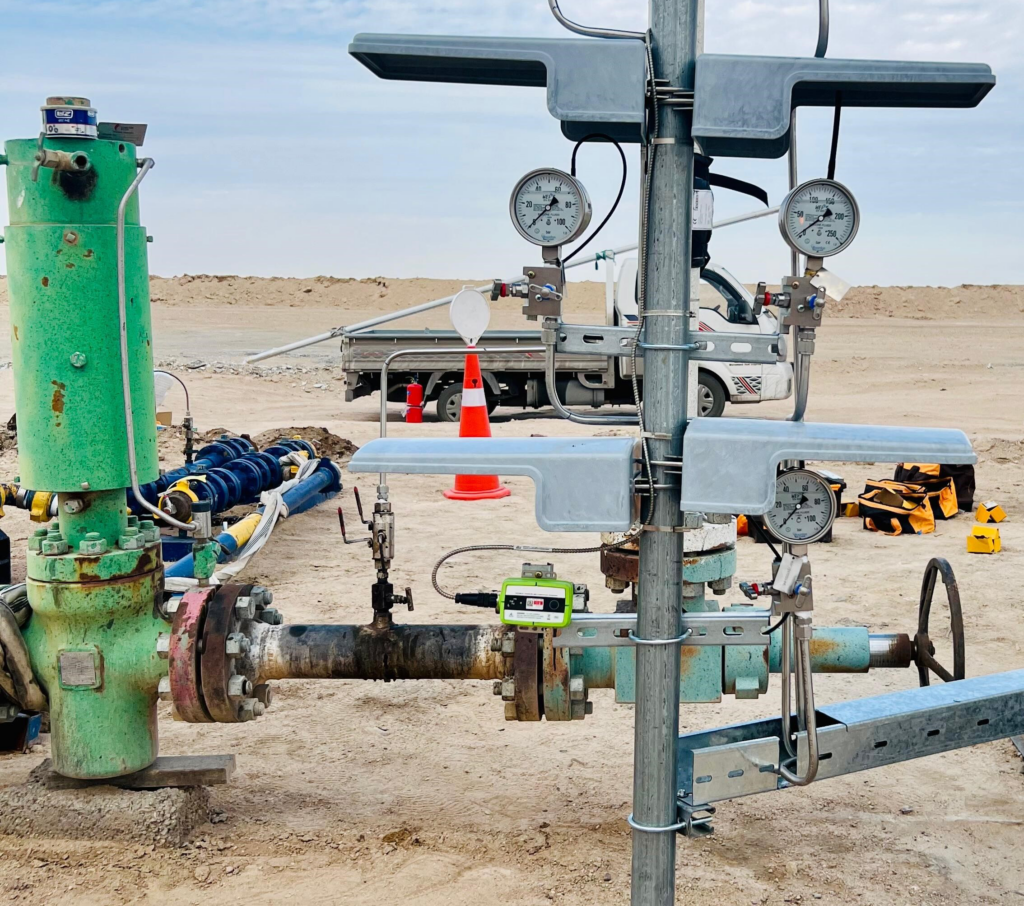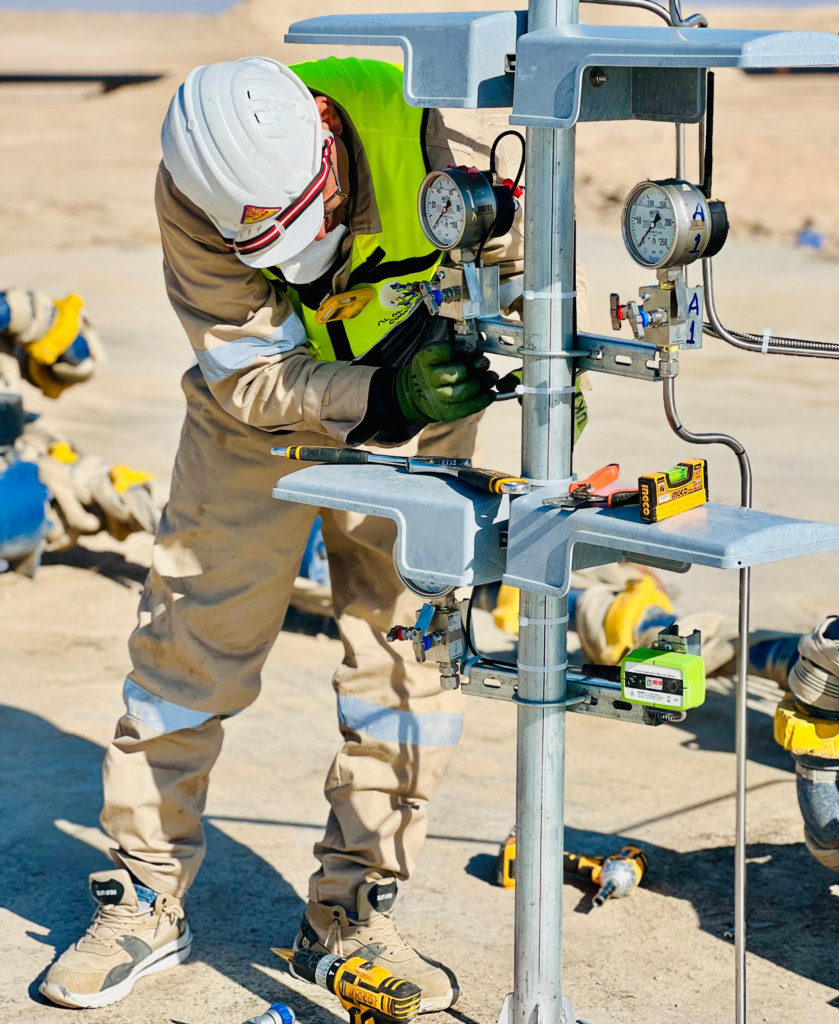
How to Improve Wellhead Monitoring and Safety in Iraq’s Harsh Oilfield Environment
Background
Al-Marafaa Company is a leading provider of IT infrastructure, IoT instrumentation, and industrial digital solutions in Iraq. As the country’s first officially licensed IoT service provider, they deliver smart monitoring systems for the oil and gas industry, ensuring enhanced operational efficiency, improved safety, and future-ready digital transformation.
This Use Case is set in the Ratawi Oil Field, a critical oil production hub located in southern Iraq. Part of Iraq’s broader energy development strategy, this high-output field includes multiple wellheads and processing units, each essential to safe and efficient oil extraction. These wellheads operate under extreme temperature conditions and harsh environments, making precision monitoring vital.
This project marks a major milestone – the first deployment of TWTG’s NEON Sensors in Iraq.
The Challenge
In the Ratawi Oil Field, where desert heat and pressure extremes are part of daily operations, wellhead temperature fluctuations can quickly lead to mechanical stress, equipment damage, or even hazardous failures. Prior to this deployment, temperature readings were collected through manual inspections – time-consuming, often delayed, and risky for field operators.
The site faced several pressing issues:
- Operational Inefficiencies: Manual checks lacked frequency and detail, making proactive action difficult.
- Equipment Failures: Overheating went undetected until damage was already done, leading to costly downtime.
- Safety Risks: Personnel were routinely exposed to hazardous environments during inspections.
- High Costs: Emergency repairs, production losses, and inefficient resource allocation drove up costs.
During routine inspections, field teams observed concerning temperature spikes and inconsistencies. Reports confirmed that delays in identifying thermal anomalies had already led to downtime and unplanned maintenance events. It became clear that reactive responses needed to be replaced, and that an IoT-driven temperature monitoring system was essential to detect any future anomalies early and remotely.
The Solution
To meet this challenge, Al-Marafaa deployed TWTG’s NEON Temperature Transmitters directly on high-risk wellheads in order to provide accurate, near real-time temperature readings. Predictive maintenance that would help ensure more efficient and safer working conditions in one of Iraq’s most demanding oil production environments.

These industrial-grade sensors are designed for extreme environments and provide accurate, wireless, low-power temperature monitoring. Strategically placed on wellheads most vulnerable to temperature stress, the devices captured readings continuously and transmitted the data via LoRaWAN to an analytics dashboard. This allowed engineers and operators to:
- Monitor temperature trends continuously.
- Set threshold-based alerts for immediate anomaly detection.
- Enable predictive maintenance scheduling based on actual wear and
stress patterns.
“The deployment of TWTG’s NEON Temperature Transmitters has transformed how we monitor wellhead conditions.“
With historical data now available at their fingertips, the team could detect gradual heat build-up and prevent equipment failures well before they occurred.
Products Used
- NEON Temperature Transmitter – (see datasheet at twtg.io)
Key Benefits
The initiative led to noticeable improvements across key areas, with teams reporting enhanced efficiency and a smoother workflow.

Since implementation, the benefits are:
- 40% Reduction in Unplanned Downtime: Thanks to early detection of overheating and system anomalies
- 60% Reduction in Manual Inspections: Remote monitoring allowed teams to focus only where needed
- 30% Lower Maintenance Costs: Maintenance could now be scheduled proactively, not reactively
- Improved Equipment Lifespan: Reduced thermal stress led to fewer failures
- 25% Drop in Field Fuel Use: Fewer trips to the site meant a smaller carbon footprint
- Safer Working Conditions: Decreased dependency on onsite interventions in high-risk zones
- Enhanced Regulatory Compliance: Continuous monitoring supports environmental safety audits and HSE standards
- Enhanced Operational Efficiency: Through real-time alerts, predictive maintenance, and reduced emergency shutdowns
This first-of-its-kind deployment in Iraq has created a blueprint for future rollouts across the region. The data collected will feed into broader digital transformation goals, including full-scale asset performance management.
Conclusions
The deployment of TWTG’s NEON Temperature Transmitters at the Ratawi Oil Field has transformed how wellhead conditions are monitored and managed. By moving from manual inspections to automated, IoT driven insights, Al Marafaa has significantly improved operational resilience, enhanced safety, and reduced maintenance costs.
The success of this initial deployment serves as a model for future IoT implementations. Expansion plans are underway to scale the solution to additional oilfields, moving toward a fully connected, intelligent infrastructure.